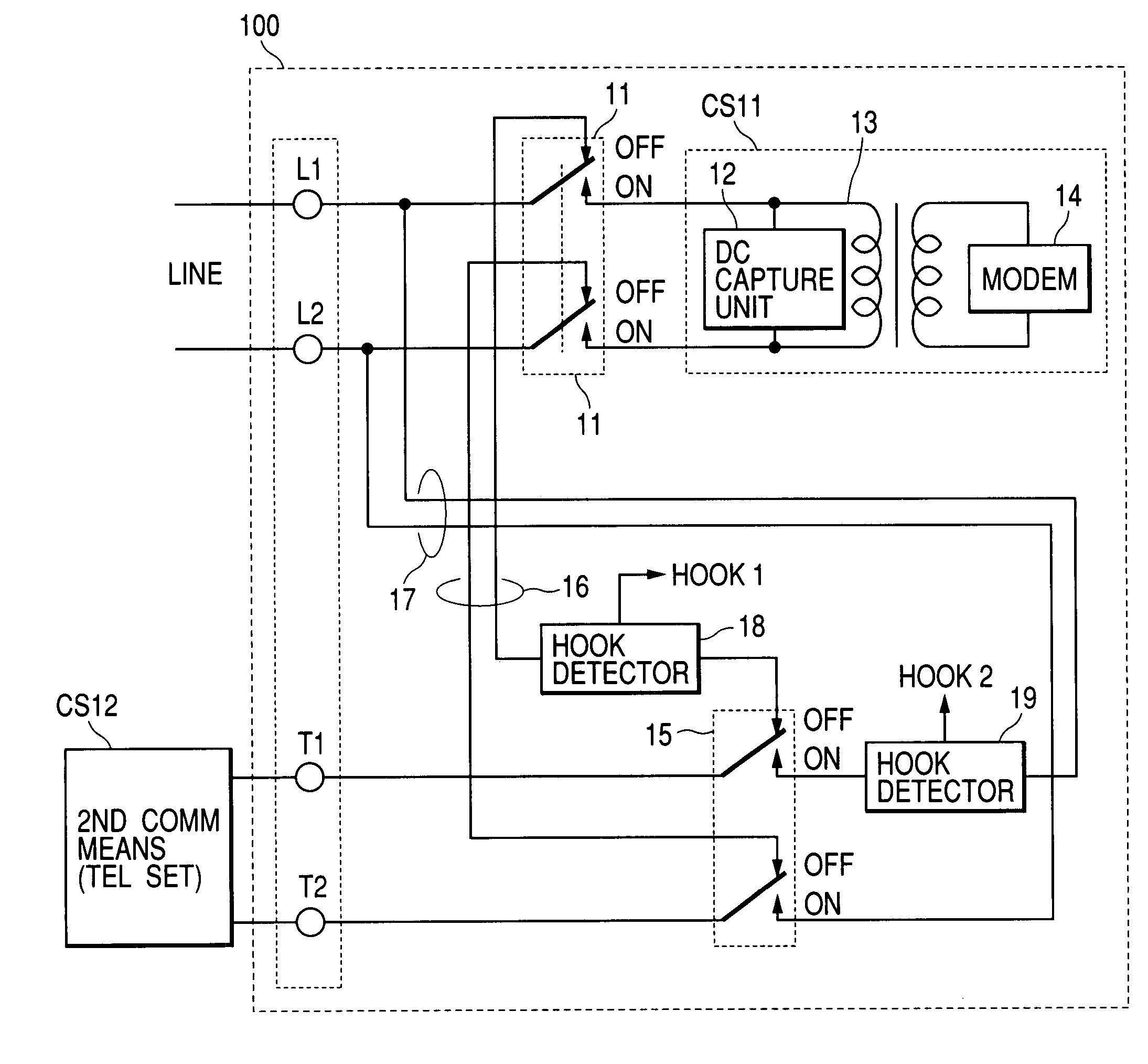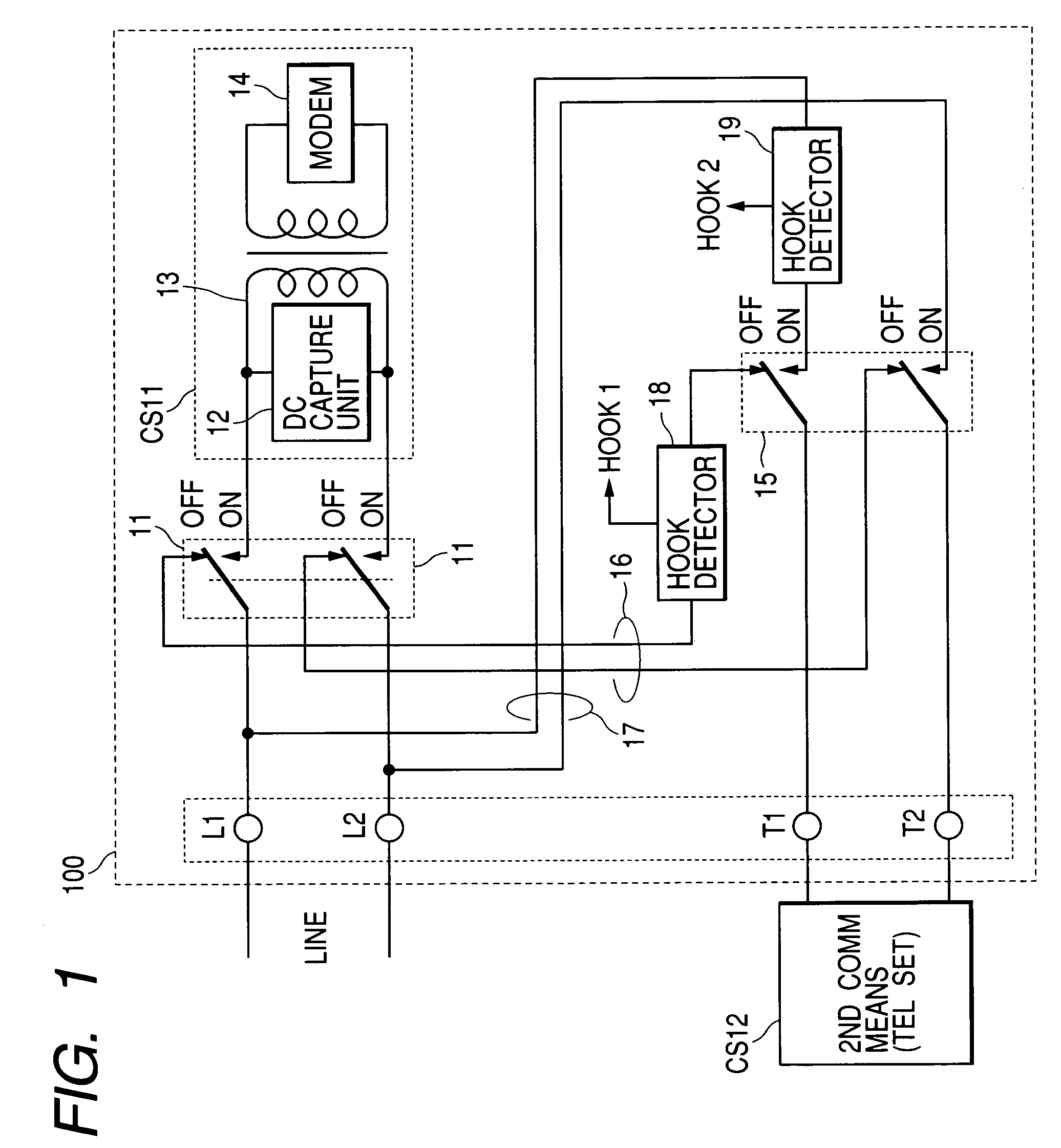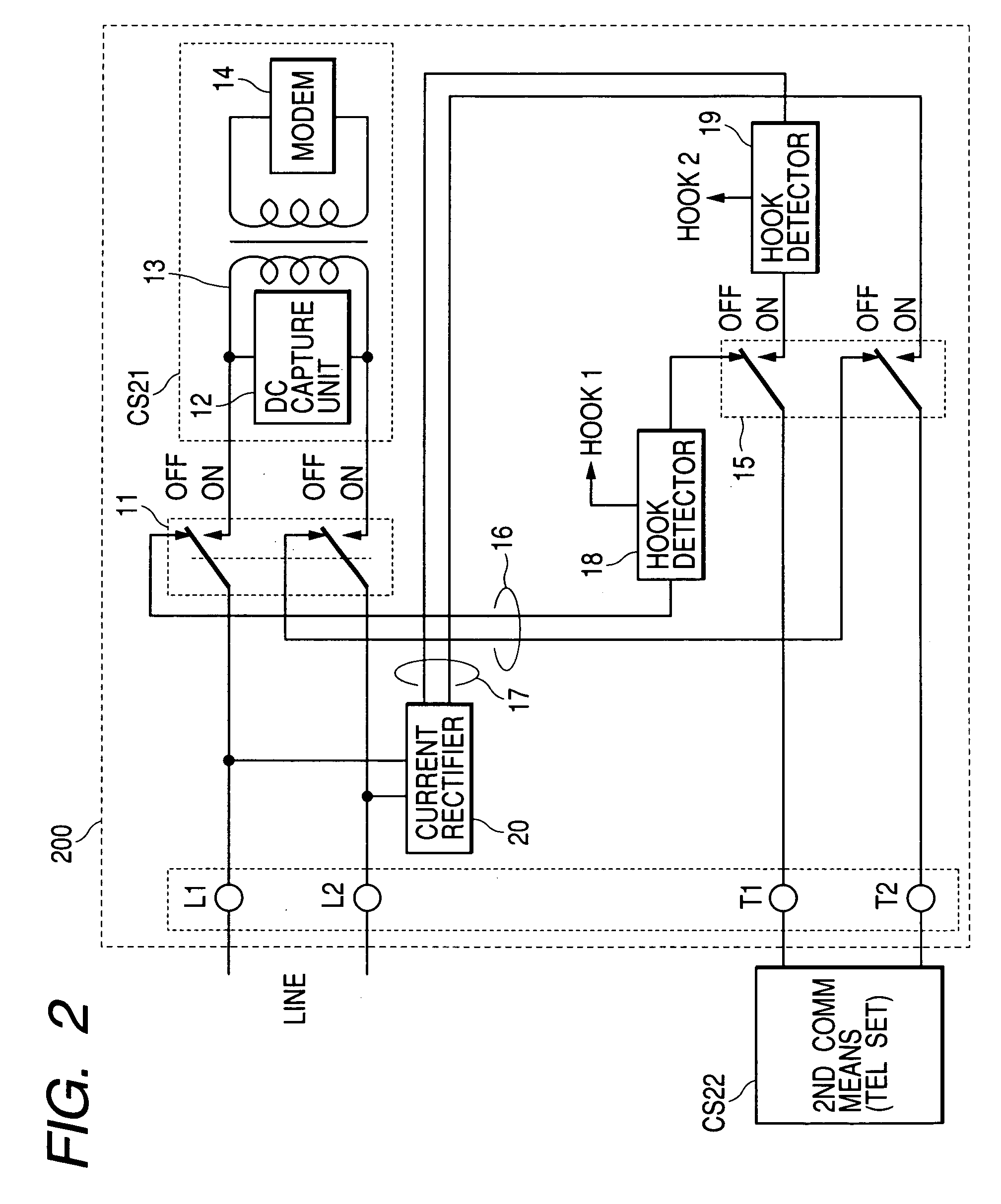Communication apparatus
a communication device and communication technology, applied in electrical devices, line monitoring circuits, pictoral communication, etc., can solve the problems of circuit cost, circuit space, and difficulty in meeting the above standards at the same time, so as to save space, and reduce the cost of the apparatus.
- Summary
- Abstract
- Description
- Claims
- Application Information
AI Technical Summary
Benefits of technology
Problems solved by technology
Method used
Image
Examples
first embodiment
[0061]FIG. 1 is a block showing a communication apparatus 100 according to the present invention.
[0062]The communication apparatus 100 includes a first communication means CS11 and further has a modular connector, etc., defined as a connecting means for connecting a second communication means CS12. The first communication means CS11 is defined as a communication means for performing, for example, facsimile communications. The second communication means CS12 is a telephone set.
[0063]The communication apparatus 100 is connected via two lines L1, L2 to an analog public line. The telephone set defined as the second communication means CS12 is connected to the communication apparatus 100 via two lines T1, T2 as a connecting means of the second communication means.
[0064]The facsimile apparatus as the communication apparatus 100 includes a CML relay 11, the first communication means CS11, an H relay 15, a first route means (or first path means) 16, a second route means (or second path mean...
second embodiment
[0097]FIG. 2 is a block diagram showing a communication apparatus 200 according to the present invention.
[0098]The communication apparatus 200 includes a first communication means CS21 and further has a modular connector, etc., defined as a connecting means for connecting a second communication means CS22. The first communication means CS21 is defined as a communication means for performing, for example, the facsimile communications. The second communication means CS22 is a telephone set as the second communication means CS12.
[0099]Moreover, the second route means 17 of the communication apparatus 200 has a current rectifier 20. The current rectifier 20 exists on the second route means 17 and is provided closer to the line than the H relay 15.
[0100]FIG. 3 is a circuit diagram showing one example of the current rectifier 20.
[0101]The current rectifier 20 uses, as illustrated in FIG. 3, four pieces of unidirectional devices (e.g., diodes). In this current rectifier 20, anode and catho...
third embodiment
[0108]FIG. 4 is a block diagram showing a communication apparatus 300 according to the present invention.
[0109]The communication apparatus 300 includes a first communication means CS31 and further has a modular connector, etc., defined as a connecting means for connecting a second communication means CS32. The first communication means CS31 is defined as a communication means for performing, for example, the facsimile communications. The second communication means CS32 is a telephone set as the second communication means CS12.
[0110]Moreover, the second route means 17 of the communication apparatus 300 has an H detection relay 21. The H detection relay 21 exists on the second route means 17 and is provided closer to the line than the H relay 15 in the communication apparatus 300. In the communication apparatus 300, the H detection relay 21 is attached to one of two wires and may also be attached to both of the two wires.
[0111]When switching on the H detection relay 21, the second rou...
PUM
 Login to View More
Login to View More Abstract
Description
Claims
Application Information
 Login to View More
Login to View More - R&D
- Intellectual Property
- Life Sciences
- Materials
- Tech Scout
- Unparalleled Data Quality
- Higher Quality Content
- 60% Fewer Hallucinations
Browse by: Latest US Patents, China's latest patents, Technical Efficacy Thesaurus, Application Domain, Technology Topic, Popular Technical Reports.
© 2025 PatSnap. All rights reserved.Legal|Privacy policy|Modern Slavery Act Transparency Statement|Sitemap|About US| Contact US: help@patsnap.com



